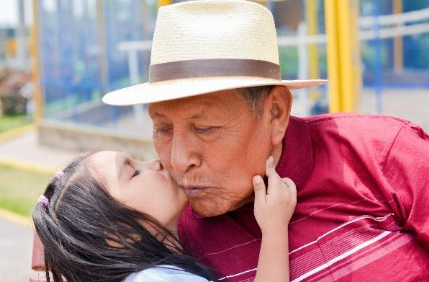
- Details
- By Jessica A. Rickert
Diabetes mellitus is a disease that affect how the body uses blood sugar (glucose). Glucose is an important source of energy for the cells that make up the muscles and tissues. It is also the brain's main source of fuel.
Insulin is a hormone made by the pancreas that allows your body to use sugar (sucrose) and glucose from carbohydrates for immediate energy. Or, insulin allows the body to store glucose for future use. These metabolic activities keeps your blood sugar level from getting too high (hyperglycemia) or too low (hypoglycemia). In diabetics, the pancreas does not function. This leads to excess sugar in the blood. Too much sugar in the blood can lead to serious health problems.
Diabetes can start at any age. Type 1 diabetes often starts during childhood or teen years. Type 2 diabetes is more common in people older than forty.
Potentially reversible diabetes conditions include prediabetes and gestational diabetes. Prediabetes happens when blood sugar levels are higher than normal but are not high enough to be called diabetes. Prediabetics can take steps to prevent the disease. Gestational diabetes happens during pregnancy.
Some of the symptoms of diabetes are thirst, urinating often, weight fluctuation, feeling tired, weak, or shaky, having mood changes, blurry vision, infections, such as gum, skin, vaginal infections and slow-healing sores.
American Indians and Alaska Natives (AIAN)have higher rates diabetes than any other US racial group.
The Native Diabetes Wellness Program is a Center for Disease Control program which honors AIAN cultural practices and western science. The Native Diabetes Wellness Program supports tribal efforts to reclaim traditional foods. If AIAN ate only the pre-Columbian diet, they would be far healthier, including less diabetes.
If you have diabetes, a healthy mouth is even more important. High blood sugar weakens white blood cells. These are your body’s soldier-cells to fight infections.
If the sugar level is high in the blood, it is high in the saliva, too. Bacteria which form plaque, a sticky film, use sugar as food. These bacteria can cause tooth decay and gum disease. Both conditions can lead to tooth loss.
Lots of fresh fruits and vegetables are recommended for diabetics. Tooth loss makes it difficult to chew and digest fresh fruits and vegetables. Without healthy teeth, diabetics tend to eat soft, processed food, These foods, which are high in carbohydrates, cause dangerous plaque, which leads to more dental disease. Dental disease itself can cause insulin levels to fluctuate. This unhealthy cycle can spiral out of control, making diabetes harder to manage.
Here is a quick look at how diabetes can take its toll on your oral health:
- Less saliva causes a dry mouth.
- The gums may become inflamed and bleed often.
- Loose teeth.
- Infections and sores in the mouth can take longer to heal.
- Pain
Regular dental visits are important to keep your mouth healthy and happy. Here are a few more important tips:
- Brush your teeth at least twice a day with fluoride toothpaste.
- Floss your teeth at least once a day.
- Tell your dentist if you have diabetes.
- If you smoke, quit. Smoking increases your risk of gum disease and can worsen your diabetes.
When you have diabetes, high blood sugar can take a toll on your entire body — including your teeth and gums. The good news? Prevention is in your hands. Take charge of your dental health.
Dr. Jessica A. Rickert is a tribal citizen of the Prairie Band Potawatomi Nation. A graduate of the University of Michigan School of Dentistry, in 1975, she became for the first female Native American dentist.
https://www.mayoclinic.org/diseases-conditions/diabetes/in-depth/diabetes/art-20
https://www.mayoclinic.org/diseases-conditions/diabetes/symptoms-causes/syc-20371444
https://www.cdc.gov/diabetes/managing/diabetes-oral-health.html
https://www.cdc.gov/vitalsigns/aian-diabetes/index.html
https://www.cdc.gov/diabetes/ndwp/index.html#:~:text=Welcome%20to%20the%20Native%20Wellness,Natives%20who%20are%20at%20risk
https://cadiresearch.org/topic/asian-indian-heart-disease/cadi-us/diabetes-among-indians-in-us
https://www.cdc.gov/healthytribes/native-american-diabetes.html
https://diabetes.org/get-involved/community/american-diabetes-month
More Stories Like This
Cherokee Nation Proposes $30 Million OU Nursing School Partnership to Expand Health WorkforceHealth Stories We’ll Be Following in 2026
Indian Country Faces Crippling Premiums Under Expired Affordable Care Act Credits
Artificial Intelligence Impacts the Art and Science of Dentistry – AI Part 2
Feds Announce $50 Billion to States for Rural Health, Tribes Barely Mentioned in Awards
